Article ImageIn the diverse tapestry of the United Kingdom, dogs are not just pets; they are family members, companions through thick and thin. The question of which breeds top the list as the most popular dog breeds UK enthusiasts adore is one that captivates both prospective dog owners and curious onlookers alike.
With a variety of factors at play, from temperament to size and grooming needs, the popularity of dog breeds in the UK reflects a broad spectrum of preferences and lifestyles. Understanding these preferences not only sheds light on the most popular dog in England but also on the cultural values and lifestyles that shape the choices of dog lovers across the nation.
This article meticulously explores the top 15 most popular dog breeds in the UK right now, from the enduring appeal of the Golden Retriever and the Labrador Retriever to the rising stars like the Cockapoo and the Labradoodle. Each breed’s unique attributes, whether it be the loyalty of the German Shepherd Dog or the sprightly nature of the Jack Russell Terrier, are examined in detail.
Additionally, less ubiquitous but equally cherished breeds such as the Border Terrier and the Dachshund are also highlighted, offering a comprehensive overview of the united kingdom dogs that hold a special place in the hearts of families across the land. This exploration not only serves as a guide for potential dog owners but also as a celebration of the diverse companions that enrich the lives of so many.
Labrador Retriever

Labrador Retriever History
The Labrador Retriever, often simply called the Labrador, has intriguing origins that trace back to the Canadian province of Newfoundland, not Labrador as the name might suggest. Initially known as the St. John’s Dog, these canines were vital to local fishermen, assisting in hauling nets and retrieving fish. Their excellent swimming abilities and water-resistant coats made them perfect for the harsh North Atlantic environment. The breed was later refined in England, where they were crossed with other retriever breeds to enhance their abilities as gun dogs. This development was significantly influenced by British nobility, including the Earls of Malmesbury and Dukes of Buccleuch, who established the breed standard for what is now known as the Labrador Retriever.
Labrador Retriever Appearance
Labradors are well-loved for their physical traits which include a dense, water-resistant coat that comes in black, yellow, or chocolate. This breed is robust and well-proportioned, typically weighing between 55 to 80 pounds. They possess a broad head, strong jaws, and their expressive eyes reflect a friendly and energetic nature. The breed’s otter-like tail and webbed paws are evolutionary traits, optimized for their original role as efficient swimmers and retrievers.
Labrador Retriever Lifespan
Labradors are generally healthy dogs with an average lifespan of 10 to 14 years. However, their longevity can be influenced by several factors including diet, exercise, and hereditary health issues. One notable study highlighted that chocolate Labradors tend to have a shorter lifespan compared to their black and yellow counterparts, primarily due to a smaller genetic pool which may lead to more health issues. Regular veterinary check-ups and a well-maintained lifestyle are crucial for their overall well-being.
French Bulldog

French Bulldog History
The French Bulldog, often affectionately called the “Frenchie,” has a history that is as intriguing as its distinctive appearance. Contrary to popular belief, the breed originated not in France, but in England among Nottingham’s lace makers who valued the dogs for their rat-chasing capabilities. During the Industrial Revolution, these workers relocated to France, bringing their toy-sized bulldogs with them.
The breed quickly became popular in their new home, especially in Paris, where they were favored by the working class and later, the bohemian artists and high society. The breed’s ‘bat ears,’ now a signature feature, became a standard in America after a controversy over ear shapes at the 1897 Westminster Kennel Club Dog Show, leading to the establishment of the French Bulldog Club of Americ.
French Bulldog Appearance
The French Bulldog is small and muscular with a smooth coat, heavy wrinkles, and a unique ‘bat ear’ structure. Their distinctive flat face and rounded forehead are complemented by eyes that stand out prominently, adding to their alert and curious expression. Despite their sturdy build, they require minimal outdoor exercise, adapting well to various living environments. Regular grooming includes cleaning their facial folds and ensuring their coat remains clean and shiny through weekly brushing.
French Bulldog Lifespan
French Bulldogs have a shorter lifespan compared to many other breeds, averaging around 4.5 to 12 years. This variance largely depends on health issues common within the breed, such as brachycephalic obstructive airway syndrome (BOAS), which affects their breathing and cooling capabilities. They are also prone to spinal issues, eye conditions, and skin allergies, which require careful management and regular veterinary care to optimize their health and well-being .
English Cocker Spaniel
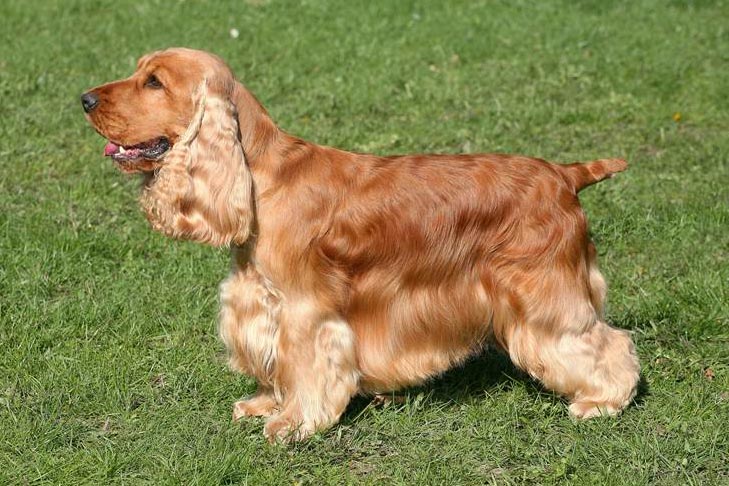
English Cocker Spaniel History
The English Cocker Spaniel has a rich heritage that dates back to the 1300s, originally bred for hunting game birds and waterfowl. Recognized for their efficiency in flushing and startling birds due to their size, these spaniels were part of the broader spaniel family that was officially differentiated into specific breeds in the 19th century. The breed was further refined into what is known today as the English Cocker Spaniel, distinct from its American counterpart by the early 20th century, with official recognition by the AKC coming in 1946.
English Cocker Spaniel Appearance
English Cocker Spaniels are compact, medium-sized dogs known for their silky coats and expressive eyes. They possess a sturdy body with a soft, feathered coat that comes in various colors and patterns. Their close-lying ears and beautifully contoured heads add to their overall esthetic appeal, making them not only great sporting dogs but also beloved pets.
English Cocker Spaniel Lifespan
English Cocker Spaniels typically enjoy a lifespan of 10 to 14 years. Factors such as genetics, diet, exercise, and regular veterinary care play crucial roles in their overall health and longevity. They are prone to certain genetic health issues like hip dysplasia and eye problems, which can affect their quality of life. Thus, maintaining a healthy lifestyle with proper nutrition and regular exercise is essential for their well-being.
Cockapoo
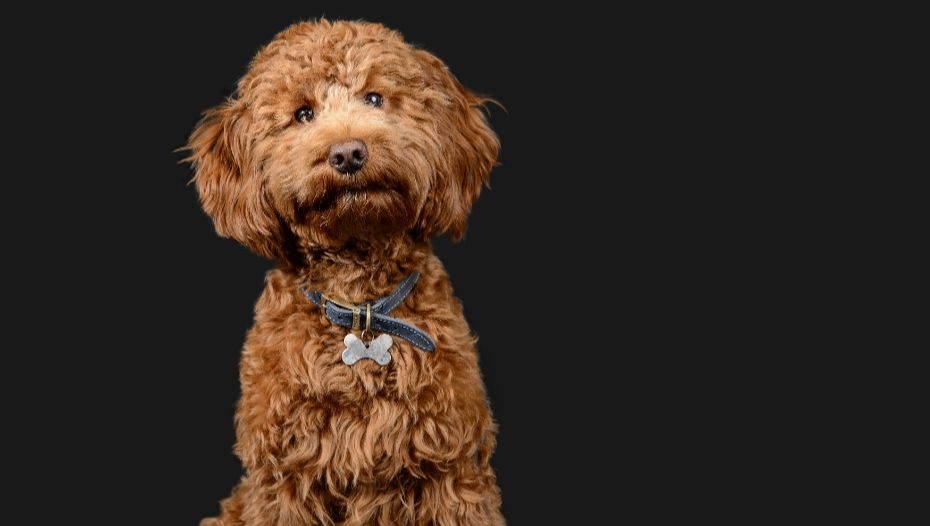
Cockapoo History
The Cockapoo, often celebrated as the original “designer dog,” has a rich history that dates back to the 1960s in the United States. This crossbreed was developed by mating a Poodle with a Cocker Spaniel, combining the intelligent and hypoallergenic qualities of the Poodle with the friendly disposition of the Cocker Spaniel. Initially bred to create a companion dog that was both smart and suitable for families with allergies, the Cockapoo quickly gained popularity and set the stage for other designer breeds.
Cockapoo Appearance
Cockapoos are known for their adorable “teddy bear” appearance, which can vary significantly due to their mixed heritage. They can range in size from small to large, depending on the Poodle parent’s size. Their coats are typically curly or wavy, inheriting the hypoallergenic traits of the Poodle, and come in a wide array of colors including black, brown, cream, and rare shades like merle and blue. The defining features of a Cockapoo include long floppy ears and a soft, expressive face that endears them to people of all ages.
Cockapoo Lifespan
Cockapoos enjoy a relatively long lifespan compared to other breeds, generally living between 12 to 15 years. Some have been known to live beyond 20 years with proper care. Factors influencing their longevity include their size, with smaller dogs typically living longer, and their mixed genetic background, which can contribute to a robust constitution. Regular veterinary care and a healthy lifestyle are crucial to maximizing a Cockapoo’s lifespan. They are prone to certain health issues inherited from their parent breeds, such as ear infections and hip dysplasia, which require attentive management.
Golden Retriever
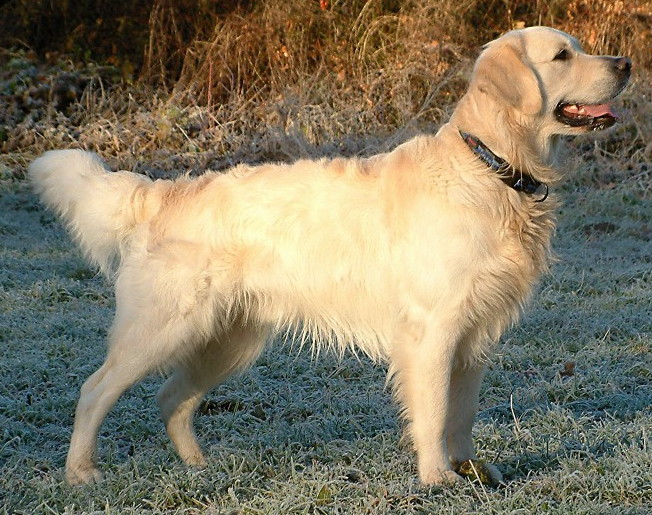
Golden Retriever History
The Golden Retriever was first developed in the Scottish country estate of Lord Tweedmouth during the 1860s. This breed was meticulously crafted to aid in retrieving both upland game and waterfowl. The breed’s lineage traces back to a yellow-colored Flat-coated Retriever named Nous, who was bred with a Tweed Water Spaniel named Belle. This pairing produced a litter that included the first Golden Retrievers, known for their excellent hunting capabilities and distinct golden coats.
Golden Retriever Appearance
Golden Retrievers are medium-sized dogs renowned for their dense, lustrous golden coats. They possess a broad head with friendly, intelligent eyes, and their body moves with a smooth, powerful gait. The breed’s double coat, which includes a thick undercoat and a water-repellent top coat, requires regular grooming to manage shedding. Their appearance is not only functional for their original roles but also adds to their charm and appeal as family pets.
Golden Retriever Lifespan
Typically, Golden Retrievers live between 10 to 13 years. Factors such as genetics, diet, and exercise play significant roles in their longevity. They are prone to certain health conditions like hip dysplasia, heart diseases, and eye conditions, which necessitate regular veterinary check-ups. Their active and playful nature requires ample exercise and mental stimulation to maintain their health and happiness.
German Shepherd Dog
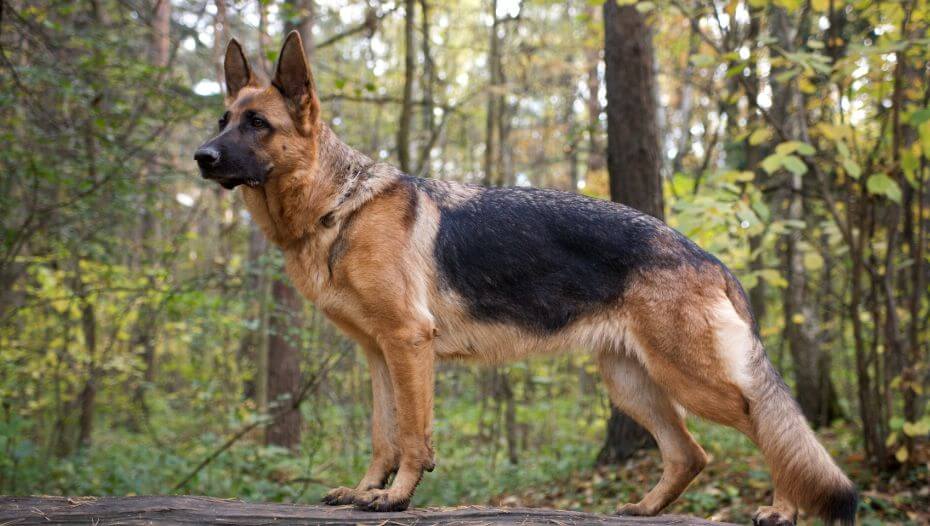
German Shepherd Dog History
The origins of the German Shepherd Dog trace back to the late 19th century in Germany, where Max von Stephanitz, a former cavalry captain and a student at the Berlin Veterinary College, envisioned creating the perfect working dog. His quest concluded in 1899 when he discovered a dog named Hektor Linksrhein at a dog show, who exemplified the ideal traits of strength, intelligence, and loyalty. Impressed by Hektor, von Stephanitz purchased him, renamed him Horand von Grafrath, and subsequently founded the Verein für Deutsche Schäferhunde, marking Horand as the first registered German Shepherd Dog. This breed was initially bred for herding but was later refined to perform various tasks, gaining prominence in various roles, including police and military applications.
German Shepherd Dog Appearance
German Shepherds are distinguished by their robust and athletic stature. Males typically stand between 60–65 cm, while females range from 55–60 cm at the withers. They are characterized by their long necks, which are raised when excited, and a bushy tail that reaches the hock. Their coat can be medium or long, with the long-haired variety being rarer due to a recessive gene. The breed’s coat is dense, close, and accompanied by a thick undercoat, commonly seen in colors ranging from black and tan to sable.
German Shepherd Dog Lifespan
The lifespan of German Shepherds varies, with multiple studies indicating a shorter life expectancy compared to other breeds. A 2024 UK study found their average lifespan to be around 11.3 years, while other studies have noted averages from 10 to 10.08 years. Factors influencing their longevity include genetic health issues and the care they receive. Despite their robust appearance, they are susceptible to conditions such as hip dysplasia and other joint disorders, which can impact their overall lifespan and quality of life.
Staffordshire Bull Terrier
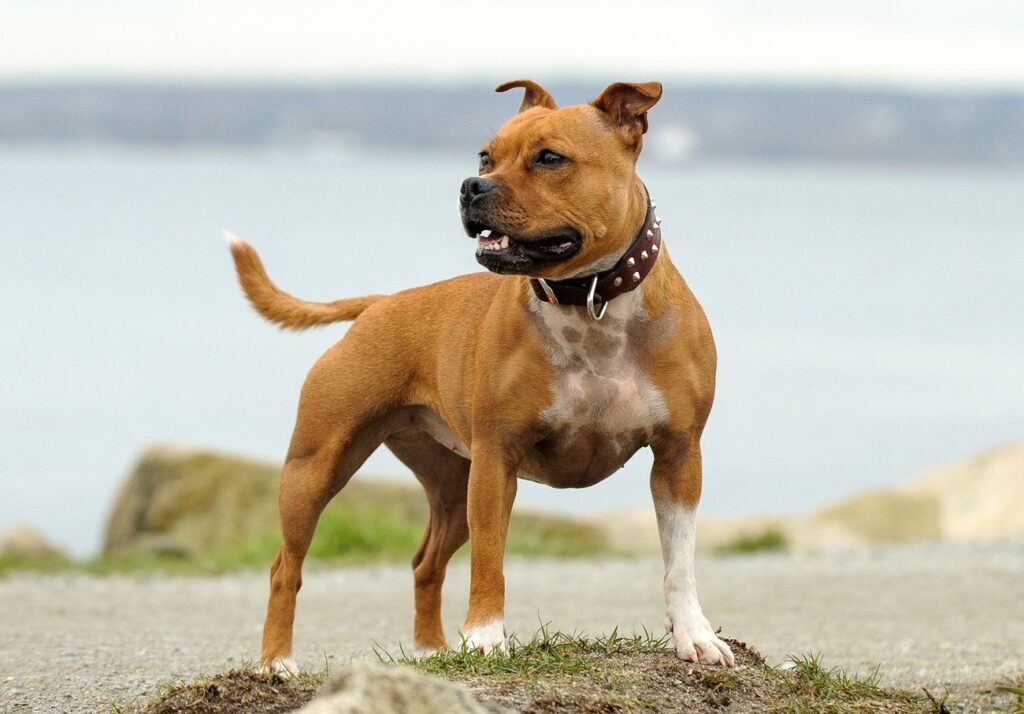
Staffordshire Bull Terrier History
The Staffordshire Bull Terrier, often referred to as the Staffy, boasts a lineage steeped in robustness and resilience. Originally bred for the brutal sports of bull baiting and bear baiting in England, these dogs were prized for their gameness, strength, and skill. After the prohibition of bloodsports in 1835, their role shifted to that of a dog fighting contender, a practice that was later also outlawed . Recognized by the UK Kennel Club in 1935, the breed’s historical significance is marked by its transition from a fighter to a beloved pet, reflecting a profound evolution in societal attitudes towards animal welfare.
Staffordshire Bull Terrier Appearance
This breed is medium-sized, muscular, and possesses a distinct appearance with a broad head, pronounced cheek muscles, and small, folded ears. Their coat is smooth, contributing to a streamlined look, and comes in various colors including black, brindle, red, fawn, and blue, often mixed with white. The Staffordshire Bull Terrier’s robust physique is complemented by a strong neck and well-muscled shoulders, supporting their historically athletic roles.
Staffordshire Bull Terrier Lifespan
Staffordshire Bull Terriers typically enjoy a lifespan of 12 to 14 years. Factors such as genetics, diet, and overall care play pivotal roles in their longevity. Known for their vitality and endurance, these dogs require regular exercise and health checks to maintain their well-being. Their history as hardy dogs in demanding roles translates into a need for consistent physical activity and engagement to foster a healthy life.
English Springer Spaniel
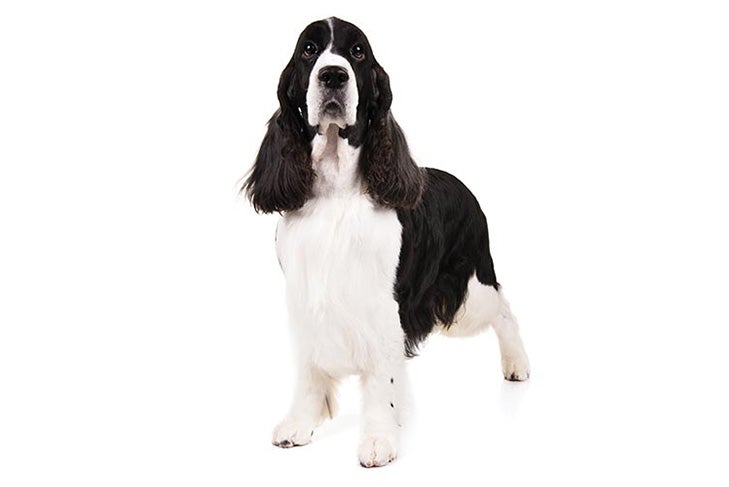
English Springer Spaniel History
The English Springer Spaniel has a storied past, tracing back to the Tudor period under Henry VIII, where they were highly valued as versatile gun dogs adept at maneuvering through challenging terrains. The breed’s prevalence increased during the Renaissance, becoming favored companions among aristocracy. Originally bred for flushing game from underbrush, the breed’s name is derived from its ability to “spring” game for hunters. Historical records from the early 19th century identify the breed’s development into a distinct type, with the Boughey family of Shropshire playing a pivotal role in breeding the first definitive strains of pure English Springer Spaniels around.
English Springer Spaniel Appearance
The English Springer Spaniel is known for its athletic build, featuring large, pendant ears, dark ovular eyes, and a moderate-length muzzle. Its deep chest enhances its stamina. The breed’s coat is typically wavy and feathered, appearing in white and liver, often with black, liver, or tan markings. They stand 19 to 20 inches at the shoulder and weigh between 40 and 50 pounds, displaying a robust and muscular stature that’s built for long days in the field.
English Springer Spaniel Lifespan
English Springer Spaniels generally enjoy a healthy lifespan of 12 to 14 years. They are predisposed to certain inherited health conditions such as hip dysplasia, eye problems, and PFK Deficiency, but these can often be managed with regular veterinary care. Regular grooming, including weekly brushing and checking the ears for signs of infection, is essential for maintaining their healt. Engaging in daily exercise and ensuring early socialization and ongoing training are crucial for their well-being.
Jack Russell Terrier
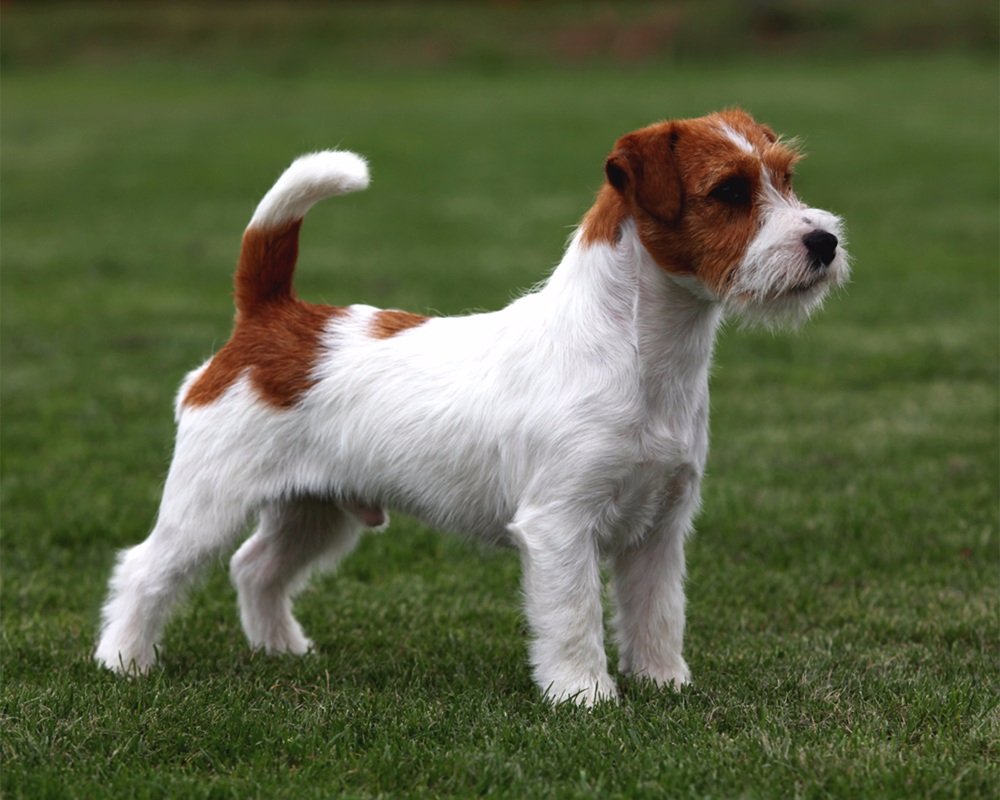
Jack Russell Terrier History
The Jack Russell Terrier, named after Reverend John Russell, originated in the mid-to-late 1800s in England. Reverend Russell, known as “the Sporting Parson,” developed this breed for fox hunting, emphasizing a small, agile dog that could chase foxes into their dens. The breed’s foundation bitch, Trump, was chosen for her predominantly white color, which made her more visible during hunts. Over time, the breed was refined to excel in both fox hunting and badger digging, with enthusiasts striving to maintain the breed’s working qualities.
Jack Russell Terrier Appearance
Jack Russell Terriers are small, robust, and energetic dogs that rarely exceed 38cm in height. They are known for their versatility in coat types, which can be smooth, rough, or a combination of both. The breed’s compact and muscular build complements its lively and tenacious character, making it an excellent hunter and energetic companion. Their coat is predominantly white with black, tan, or brown markings, which was strategically bred for better visibility during hunts 37.
Jack Russell Terrier Lifespan
Jack Russell Terriers have a notably long lifespan, often living between 13 to 16 years, with some reaching up to 20 years or more in Britain. This longevity is attributed to their robust health, high-quality diet, and regular exercise. The breed’s vitality and ability to thrive well into old age make it a cherished companion in many households.
Labradoodle
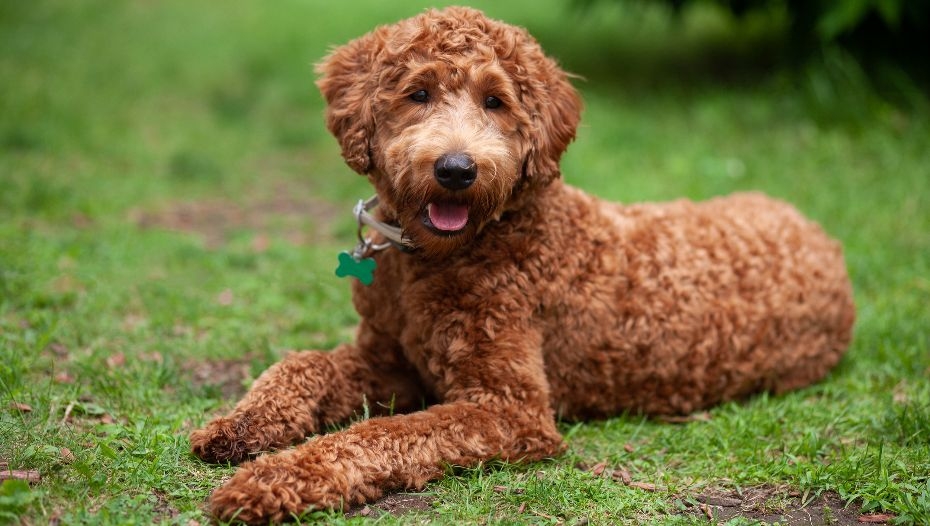
Labradoodle History
The Labradoodle was first developed in the late 1980s by Wally Conron, who worked for the Royal Guide Dogs Association of Australia. His aim was to create a guide dog suitable for people with allergies, combining the Labrador Retriever’s trainability with the Poodle’s low-shedding coat. The success of the first Labradoodle, named Sultan, who displayed the desired traits of both parent breeds, led to their popularity as both guide dogs and family pets. In the early 1990s, Australian breeders further refined the breed, incorporating other breeds like the Irish Water Spaniel and both the American and English Cocker Spaniels to enhance traits such as coat quality and temperament.
Labradoodle Appearance
Labradoodles are known for their varied coats, which can be curly, wavy, or straight, and come in colors like cream, gold, and chocolate. They typically weigh between 50 to 65 pounds and come in three sizes: Standard, Medium, and Miniature, reflecting the size variations of the Poodle. Their hypoallergenic coats make them ideal for allergy sufferers, combining the Poodle’s minimal shedding trait with the Labrador’s friendly disposition.
Labradoodle Lifespan
Labradoodles generally enjoy a lifespan of 12 to 15 years, though this can vary based on several factors including genetics and lifestyle. Their parent breeds, the Labrador Retriever and the Poodle, have lifespans that range from 10 to 18 years, which influences the Labradoodle’s longevity. Regular exercise, a balanced diet, and routine veterinary check-ups play crucial roles in extending their life expectancy. Additionally, mental stimulation and a healthy environment contribute to their overall well-being.
Boxer
Boxer History
The Boxer breed originated in Munich, Germany, towards the end of the 19th century. Initially bred from the Bullenbeisser—a type of dog used for hunting large game—Boxers are descendants of a line that dates back to ancient Assyrian war dogs from 2000 B.C. The breed was refined over the centuries, with influences from the English Bulldog and the smaller Bullenbeisser from Brabant in Northeast Belgium. The modern Boxer was officially recognized with the registration of Mühlbauer’s Flocki in the first stud book in.
Boxer Appearance
Boxers are medium to large dogs known for their muscular build and tight-fitting coats. They typically stand up to 25 inches at the shoulder and feature a distinctive head with dark brown eyes and a wrinkled forehead. Their coat, which can be either fawn or brindle, often has white markings known as “flash”. These dogs are celebrated for their athletic grace, resembling the smooth and powerful movement of the athletes after whom they are named.
Boxer Lifespan
Boxers have a varied lifespan, with studies indicating an average expectancy of about 9 to 11 years. Factors such as genetics and lifestyle play significant roles in their longevity. Despite their robust appearance, Boxers are prone to certain health issues that can impact their quality of life and longevity, necessitating regular veterinary care and a well-managed lifestyle.
Whippet
Whippet History
Whippets, often depicted in Medieval artwork, have a lineage that may be traced back centuries, though their exact historical classification alongside similar breeds remains a subject of debate. Known for their speed and agility, modern Whippets were developed in England by crossing small Greyhounds with Terriers, enhancing their hunting prowess and intelligence. This breeding not only endowed Whippets with their characteristic sleek, streamlined appearance but also a strong chasing instinct and notable “gameness” from their Terrier ancestry.
Whippet Appearance
Whippets are distinguished by their miniature Greyhound-like stature, combining muscular strength with refined elegance typical of sighthounds. They feature a sleek coat, long, thin necks, slender legs, and a narrow body with a deep chest and a distinctly tucked-up abdomen. Their small heads, long snouts, and large, expressive eyes contribute to their alert yet sweet demeanor. Whippets are recognized for their long, thin tails that are kept low, aligning with their backs.
Whippet Lifespan
Typically, Whippets enjoy a healthy lifespan ranging from 12 to 15 years, with well-cared-for dogs potentially living longer. Their longevity is primarily attributed to their overall good health, with most Whippets passing from natural causes related to old age. It’s crucial for their longevity that they maintain a healthy diet and receive regular exercise. Regular grooming and appropriate exercise, such as sprinting in safe, enclosed spaces or participating in activities like lure-coursing, are essential for maintaining their physical and mental well-being.
Miniature Schnauzer
The Miniature Schnauzer, originally bred as a farm dog in Germany, was designed for ratting, herding, and guarding property. This breed evolved from the Standard Schnauzer and was downsized by incorporating smaller breeds such as the Affenpinscher and Miniature Poodle. The breed’s development was further refined with the first recorded Miniature Schnauzer appearing in. By 1926, the breed was recognized by the American Kennel Club, marking its official establishment in the United States.
Miniature Schnauzer Appearance
Miniature Schnauzers are distinguished by their “Schnauzer cut” and wiry, double coat that comes in black, white, or salt and pepper. They are small but robust, typically standing 12-14 inches tall and weighing between 12-20 pounds. Their distinctive facial features include bushy eyebrows and a beard, along with a square-shaped build that gives them a sturdy appearance.
Miniature Schnauzer Lifespan
Miniature Schnauzers generally have a lifespan of 12 to 15 years, showing signs of aging later in life which allows them to maintain a youthful demeanor for many years. Studies have shown a life expectancy of about 3.3 years in the UK, which is slightly higher than the average for crossbreeds. Regular grooming and health checks are essential to manage common issues like dental disease and maintain their overall well-being
Border Terrier
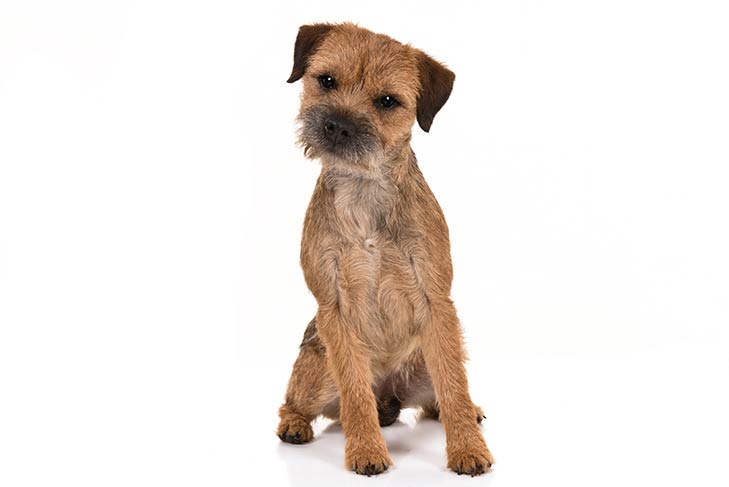
Border Terrier History
Originating from the rugged borderlands between Scotland and England, the Border Terrier was bred for its prowess in fox hunting, specifically developed to follow horses and keep foxes at bay. its history extends back to the Middle Ages, becoming particularly prominent when Jacob Robson and E.L and Simon Dodd took charge of the Border Foxhounds in 1879, leading to the breed’s official recognition as the Border Terrier. This breed was integral in both protecting livestock from foxes and participating in hunts, requiring a dog that was agile, intelligent, and capable of working alongside other dogs.
Border Terrier Appearance
Border Terriers are small to medium-sized with a distinct double coat that is thick and hardy, providing protection against harsh climates. They typically weigh up to 7kg and can grow up to 37cm tall, featuring a rough outer coat that needs regular grooming to maintain its condition. The breed’s physical build and coat are adapted for digging and navigating through narrow spaces during hunts.
Border Terrier Lifespan
These robust terriers generally enjoy a healthy lifespan, often living up to 14 years and potentially longer with proper care and a sound diet. Their longevity is supported by their active lifestyle and genetic makeup, which has been refined over centuries to produce a hardy, enduring breed. Regular health checks and maintenance of their coat are essential to ensure they live full, active lives.
Dachshund
Dachshund History
The Dachshund, a breed with a distinct silhouette, traces its origins to Germany in the 15th century, primarily bred for hunting badgers and other burrow-dwelling animals. The name “Dachshund” literally translates to “badger dog” in German, reflecting its original purpose. The breed was developed from the taller hunting hounds like the Schweisshund and selectively bred to enhance its digging abilities, crucial for flushing out badgers and rabbits. Historical references suggest that these dogs were also utilized for hunting tasks in various European royal courts, including that of Queen Victoria.
Dachshund Appearance
Characterized by its long body and short legs, the Dachshund is known for its robust and muscular build, which aids in its burrowing tasks. This breed comes in three coat types: smooth, longhaired, and wirehaired, with a variety of colors and patterns, including single-colored, dapple, and brindle. Their distinctive paddle-shaped paws are specifically adapted for efficient digging. The standard variety of the Dachshund stands about 8 to 9 inches tall and weighs between 16 to 32 pounds, while the miniature version is notably smalle.
Dachshund Lifespan
Dachshunds are generally long-lived, with the standard Dachshunds having an average lifespan of approximately 11.2 years and miniatures around 10.2 years. However, their lifespan can be influenced by common health issues such as Intervertebral Disk Disease (IVDD), which is particularly prevalent in the breed. The breed’s longevity varies, with some studies indicating a median lifespan of up to 13.5 years for miniatures. Regular veterinary care and a healthy lifestyle are essential for managing their health conditions and extending their lifespan.
Conclusion
Throughout the exploration of the top 15 most popular dog breeds in the UK, we’ve traversed a broad landscape of canine diversity, each breed embodying unique characteristics, histories, and appeals that cater to a wide variety of preferences and lifestyles. From the enduring loyalty of the Labrador Retriever and the affable nature of the Golden Retriever to the distinctive charm of the Cockapoo and the robust spirit of the Staffordshire Bull Terrier, these breeds exemplify the multifaceted companionship dogs provide. Their stories, steeped in history and enriched by their roles in families and society, underscore the profound bond between humans and their four-legged friends, demonstrating the integral role they play in our lives.
The significance of understanding each breed’s needs, health considerations, and ideal environments cannot be overstated, as it ensures the well-being of these cherished companions and enhances the mutual joy of the dog-human relationship. Highlighting the need for responsible ownership, including regular health checks, appropriate exercise, and mental stimulation, this overview serves not only as a tribute to the diverse canine populace gracing the UK’s homes but also as a guide for prospective and current dog owners alike. In celebrating the unique attributes and needs of each breed, we are reminded of the invaluable contribution dogs make to our lives, enriching them with unconditional love, laughter, and companionship.
FAQs
What is currently the most popular dog breed in the UK?
The Labrador Retriever leads the pack as the most popular dog in the UK with 38,074 registrations. It is followed by other popular breeds such as the French Bulldog, Cocker Spaniel, Mini Shorthaired Dachshund, Golden Retriever, English Springer Spaniel, Bulldog, and Staffordshire Bull Terrier.
Which dog breed is expected to be the most popular in the UK in 2024?
The Labrador Retriever is projected to remain the most popular dog breed in the UK in 2024. Known for its energetic and loving nature, it is a favorite among families. Originally bred as a working dog, it was used primarily to assist fishermen.
What was Britain’s favorite dog breed in 2022?
In 2022, the Labrador Retriever was Britain’s favorite dog breed with 44,311 new registrations. The French Bulldogs and Cocker Spaniels were also highly popular, rounding out the top three breeds in the UK for that year.
Which breed tops the list as the number one pet dog?
The Labrador Retriever is also recognized as the number one pet dog, beloved for its friendly and sociable nature.

